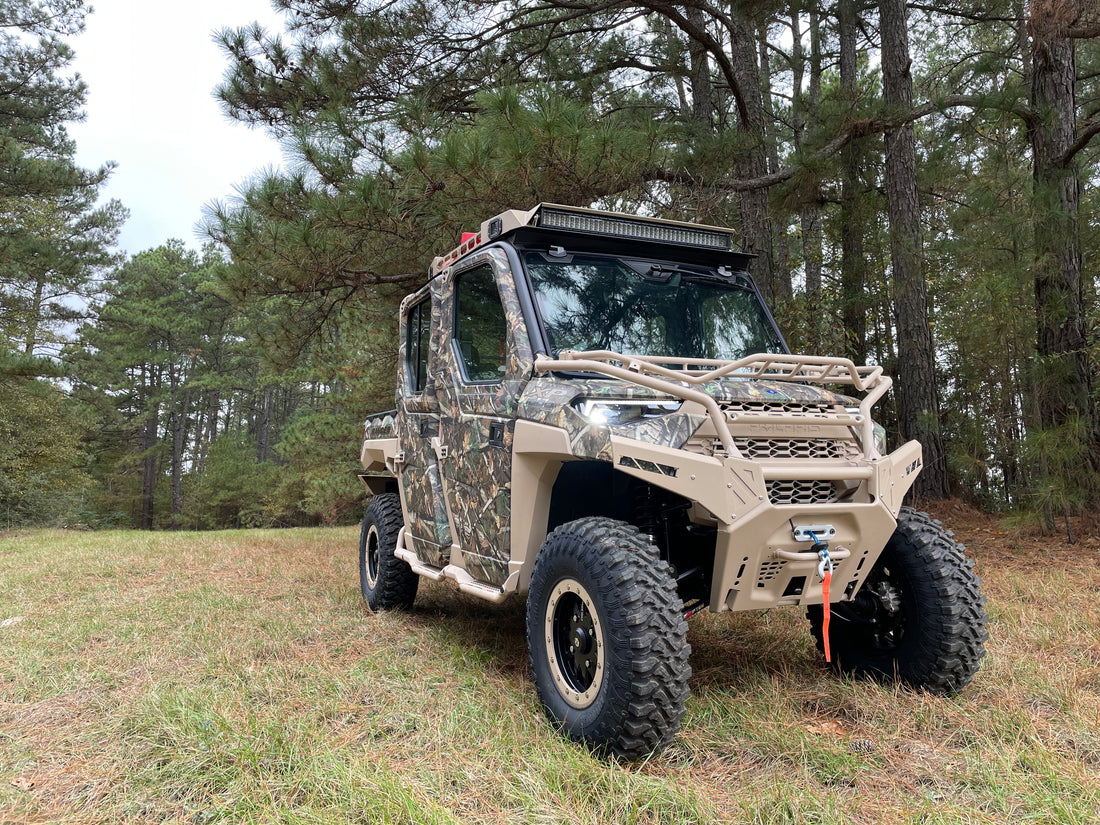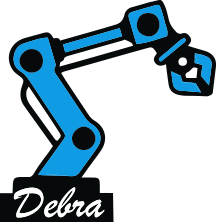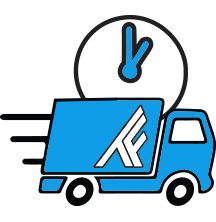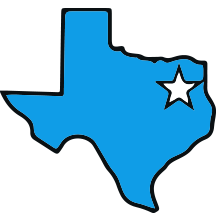Maintaining your Polaris Ranger is crucial for ensuring its optimal performance and extending its lifespan. This comprehensive guide dives into the maintenance schedule, offering detailed insights into the essential care and upkeep tasks. From routine checks to more detailed service recommendations, understanding and following this schedule is key to enjoying your adventures without unexpected hitches.
Whether you're tackling rugged terrains or enjoying leisurely trails, this guide equips you with the knowledge to keep your Polaris Ranger running like new, ensuring every ride is as thrilling as the first.
Understanding the Polaris Ranger Maintenance Schedule
The maintenance schedules vary slightly depending on the specific model of your Polaris Ranger but generally include regular checks and replacements of key components.
For the Polaris Ranger 1000 models, including the General 1,000 Sport, Deluxe, and Premium, maintenance tasks are outlined with specific intervals for parts like air filters, brake pads, batteries, engine oil and filters, drive belts, gearcase oil, spark plugs, wheel bearings, clutches, and radiator coolant. These components require attention at various intervals measured in hours of operation, months, or miles/kilometers driven, with some needing inspection and potential replacement more frequently under certain conditions.
For example, air filters may need weekly inspections and replacements depending on the conditions, while brake pads and batteries require monthly checks. Engine oil and filters should be changed every 100 hours or 6 months, and drive belts should be inspected at the same interval. Gearcase oil changes are recommended every 100 hours or annually, indicating the importance of regular fluid checks and replacements to maintain the vehicle's performance.
Further, the Ranger XP 1000 and Non-XP Ranger 1000 Editions share similar maintenance needs, with additional attention to the clutch and rear gearcase or transmission fluid every 12 months or 1,000 miles (1,600 km). Radiator coolant is recommended for change every five years across models, highlighting the necessity of coolant maintenance for engine health.
Adhering to these maintenance schedules ensures your Polaris Ranger remains reliable and performs at its best, whether used for work or recreation. Regular maintenance not only prevents unexpected breakdowns but also maximizes the utility and enjoyment of your ride over time. For detailed maintenance schedules specific to your model, refer to the owner's manual or consult with a professional technician to keep your Polaris Ranger running smoothly.
Servicing Your Polaris Ranger
Servicing your Polaris Ranger is crucial for maintaining its performance and longevity, with recommended service intervals varying based on the type of use—whether for recreation or work—and the environments in which it operates.
Recreational Use: For Polaris Rangers used primarily for recreational activities, such as trail riding or exploration, it's recommended to perform a thorough service at least every 100 hours of operation or annually, whichever comes first. Recreational use often involves varying terrains and conditions, which can influence the wear on components like the air filter, engine oil, and tires. Regular checks and servicing will ensure the vehicle remains in optimal condition for leisure activities.
Work Use: When the Polaris Ranger is used in work environments—such as farming, ranching, or on job sites—servicing might need to be more frequent. Heavy-duty use, characterized by towing, carrying loads, or navigating rough terrains, can put additional strain on the vehicle. For these conditions, consider servicing your Ranger every 50 to 100 hours of operation. Paying close attention to the transmission fluid, cooling system, and brake pads is particularly important in these scenarios.
Environmental Considerations: The environment in which you use your Polaris Ranger also affects the servicing intervals. Operating in dusty or muddy conditions, for example, necessitates more frequent air filter checks and replacements. Similarly, riding in wet or snowy environments requires regular inspection and maintenance of the cooling system and brakes to prevent corrosion and wear.
General Recommendations:
- Engine Oil and Filter: Change every 100 hours or 6 months, with a break-in oil change recommended after the first 25 hours of operation.
- Air Filter: Inspect regularly, especially in dusty conditions, and replace as needed.
- Transmission and Gearcase Oil: Check every 100 hours and change annually.
- Coolant: Replace every two years or according to the manufacturer's guidelines.
- Brakes and Tires: Inspect regularly for wear and tear, replacing as necessary.
Always refer to your Polaris Ranger's owner's manual for model-specific maintenance recommendations and adjust servicing intervals based on your usage patterns and environmental conditions to keep your vehicle running smoothly for years to come.
The Consequences of Neglect
Neglecting the Polaris Ranger maintenance schedule can lead to a range of problems, potentially causing significant damage to your vehicle and even posing safety risks. Here’s what could happen if regular maintenance is overlooked:
Reduced Performance
Without regular checks and replacements, your Ranger's engine might lose efficiency, leading to poorer fuel economy, reduced power output, and sluggish handling. This can diminish the overall driving experience, especially in demanding off-road conditions.
Increased Wear and Tear
Components like the engine oil, air filter, and brake pads are designed to protect against excessive wear. If not maintained, critical parts can deteriorate much faster than expected, leading to premature failures and the need for costly repairs or replacements.
Safety Risks
The safety of your Polaris Ranger is paramount. Neglected maintenance can compromise crucial safety features, such as brakes and tires, increasing the risk of accidents. For instance, worn brake pads might not provide adequate stopping power, and old tires could lead to reduced traction and control.
Engine and Transmission Damage
The engine and transmission are the heart of your Polaris Ranger. Neglecting oil changes, for example, can result in inadequate lubrication, causing overheating, excessive friction, and eventually, major engine or transmission damage.
Cooling System Failures
The cooling system keeps your engine from overheating. Ignoring coolant changes or not addressing leaks can lead to overheating, which might cause engine warping, head gasket failures, and other severe engine issues.
Electrical System Issues
Batteries and electrical connections require regular inspections to ensure they’re clean and secure. Neglect can lead to electrical failures, starting issues, and unreliable operation of lights and accessories.
Decreased Resale Value
Regular maintenance not only keeps your Polaris Ranger running smoothly but also maintains its value. A well-documented service history can significantly enhance its resale value, while neglect could drastically reduce it.
Comprehensive Maintenance Guides
For comprehensive and detailed maintenance guides for your Polaris Ranger, several reliable resources are available to ensure you have all the information you need for proper upkeep:
- Official Polaris Website: The Polaris website is a treasure trove of maintenance information, offering access to owner's manuals, service schedules, and specific maintenance advice directly from the manufacturer. You can find guides tailored to your particular model of Polaris Ranger, ensuring the advice is as relevant and useful as possible.
- Service Manuals: Purchasing a service manual for your Polaris Ranger model provides in-depth maintenance, troubleshooting, and repair information. These manuals are incredibly detailed, covering everything from routine maintenance to complex repairs, and are designed for both novice owners and experienced mechanics.
- Polaris Dealerships: Your local Polaris dealership is not only a place to service your Ranger but also a valuable resource for maintenance advice. Dealerships have trained technicians who are familiar with every aspect of Polaris Ranger care and can provide personalized advice, schedules, and tips based on your specific usage and needs.
- Online Forums and Communities: The Polaris Ranger community is vast and active, with many experienced users sharing their knowledge online. Forums and social media groups dedicated to Polaris UTVs can be excellent places to find maintenance tips, troubleshooting advice, and personal experiences from other Ranger owners.
- YouTube Channels: Several reliable YouTube channels provide visual guides and tutorials on Polaris Ranger maintenance. These can be particularly helpful if you're a visual learner or prefer step-by-step instructions for tasks ranging from oil changes to more complex repairs.

Polaris Ranger Upkeep Tips
Maintaining your Polaris Ranger ensures optimal performance, reliability, and longevity. Here are some practical tips for keeping your Ranger in prime condition:
Regular Checks
Fluid Levels: Regularly check and maintain the engine oil, coolant, and brake fluid levels. Fresh fluids prevent overheating and ensure smooth operation.
Air Filter: Inspect the air filter frequently, especially after rides in dusty conditions. A clean air filter is crucial for maintaining engine health and efficiency.
Tire Pressure: Keep tires inflated to the recommended pressure levels. Properly inflated tires provide better traction, and fuel efficiency, and reduce wear.
Brake Inspection: Regularly check brake pads and discs for wear. Timely replacement of brake components is essential for safety.
Cleaning and Preventive Measures
Regular Cleaning: Wash your Polaris Ranger regularly to remove mud, dust, and debris. This not only keeps your vehicle looking great but also prevents rust and corrosion.
Protective Coatings: Apply protective coatings to metal parts to guard against rust. Regularly lubricate moving parts to prevent wear and tear.
Undercarriage Care: Pay special attention to cleaning the undercarriage, which is most susceptible to accumulating grime and rust.
Engine Care
Engine Maintenance: Follow the manufacturer’s guidelines for engine maintenance. Regularly changing engine oil and filters keeps the engine running smoothly and prevents premature wear.
Cooling System: Ensure the cooling system is functioning correctly to prevent engine overheating. Check coolant levels and the radiator for blockages.
Tire and Brake Checks
Tire Maintenance: Regularly inspect tires for signs of wear, cuts, or punctures. Rotate tires to ensure even wear and replace them when tread depth is low.
Brake Maintenance: Check the brakes for responsiveness. Listen for any unusual sounds like grinding or squeaking, which could indicate that the brake pads need replacement.
Seasonal Adjustments
Adjust for Seasons: Prepare your Ranger for different seasons. In winter, consider using antifreeze and inspecting the heater (if applicable). In summer, ensure the cooling system is efficient to handle higher temperatures.
Professional Servicing
Scheduled Service: Even with diligent personal maintenance, ensure your Polaris Ranger undergoes professional servicing as per the maintenance schedule. Professionals can spot issues you might miss and perform complex maintenance tasks.
Conclusion
Hopefully, we’ve helped you through the essentials of maintaining your Polaris Ranger, emphasizing the critical role that a diligent maintenance schedule plays in ensuring the longevity and reliability of your vehicle. From the importance of regular checks and servicing intervals to practical upkeep tips covering engine care, tire pressure, and brake checks, we've covered the key aspects to keep your Ranger running smoothly.
Maintaining your Polaris Ranger isn't just about preventing breakdowns; it's about preserving its performance and extending its life, ensuring that it remains a dependable companion on all your adventures. Regular maintenance, such as checking fluid levels, cleaning, and timely parts replacement, is fundamental to avoiding costly repairs and ensuring your safety on and off the trails.
Ready to take care of your Polaris Ranger? Check out Thumper Fab’s maintenance products.




